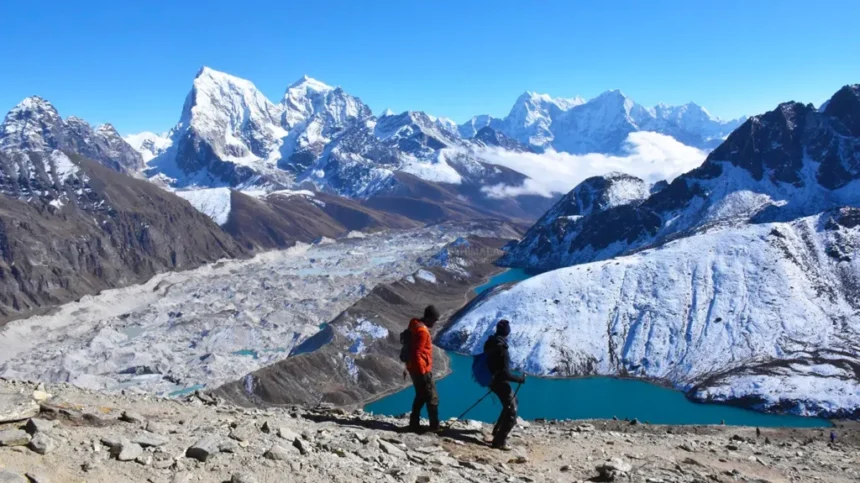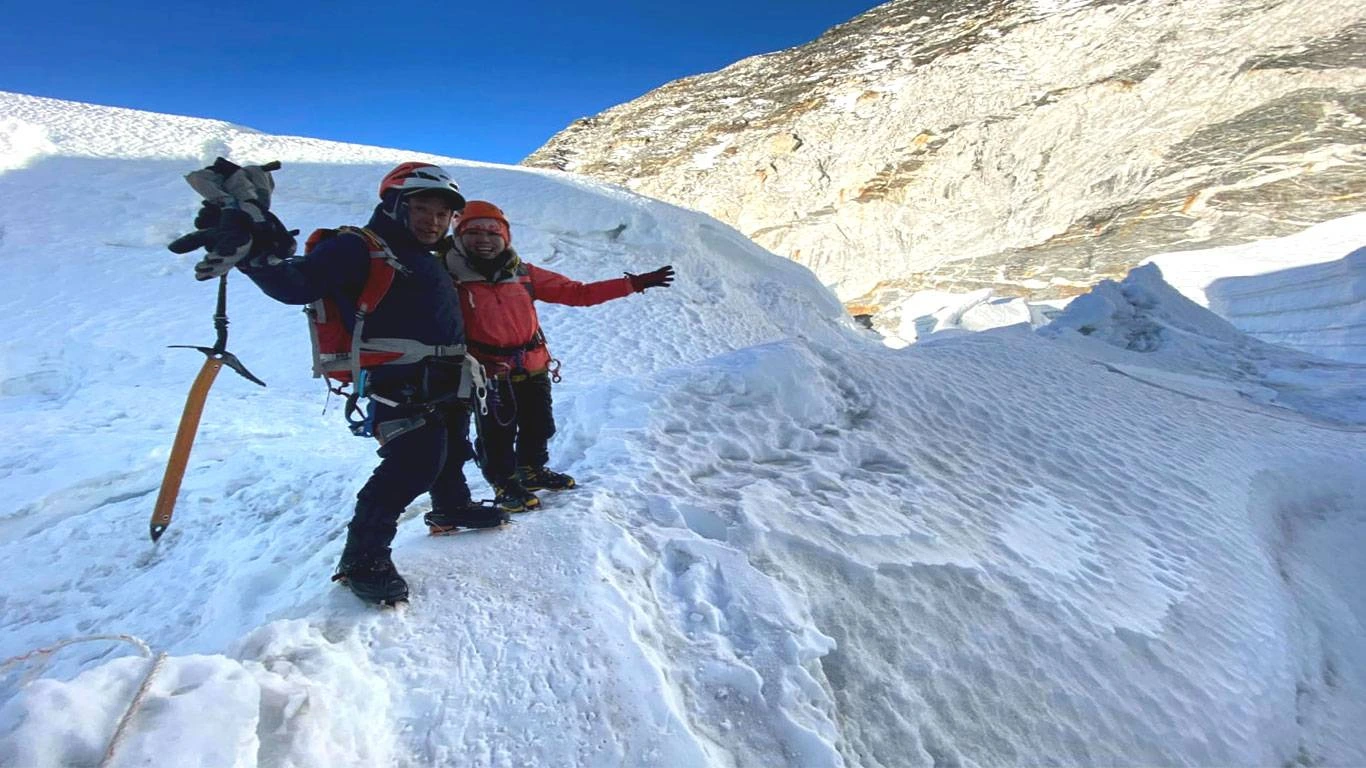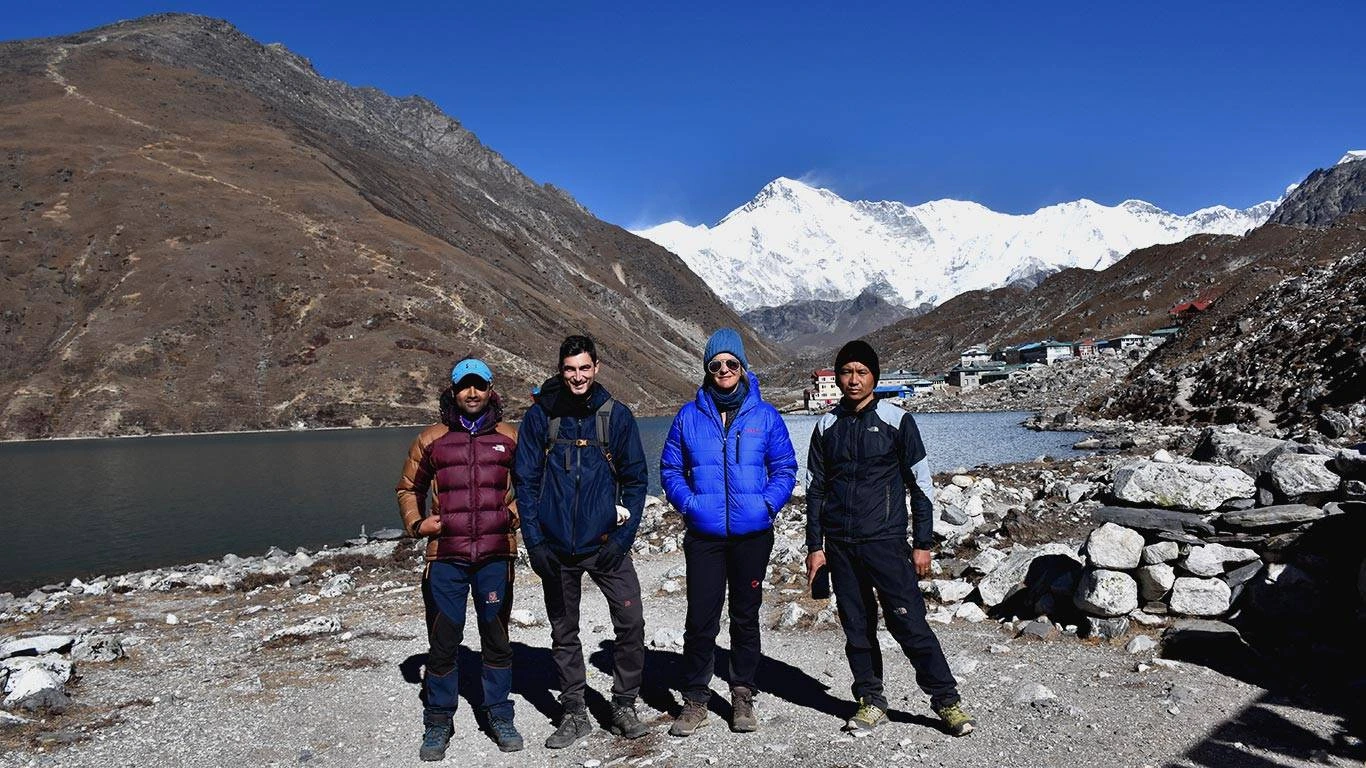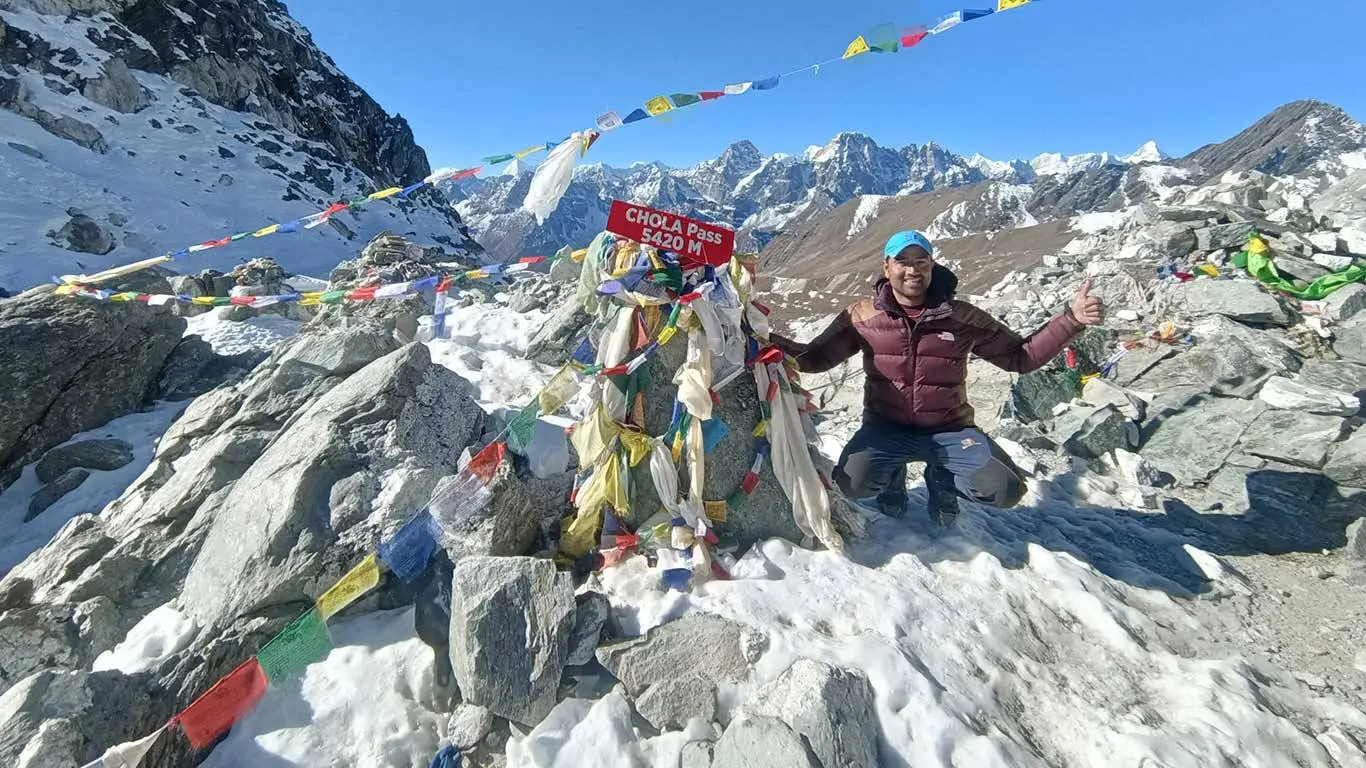Who Are the Sherpas?
The Sherpas are a group of people who live in the high mountains of Nepal, mostly near Mount Everest. They are famous for being strong, skilled climbers who help people reach the top of the world’s highest peaks. But the Sherpas are much more than just mountain guides. They have a rich history, unique traditions, and a deep connection to the Himalayas.
Where Did the Sherpas Come From?
A long time ago, the Sherpa people moved from Tibet to Nepal. This happened more than 500 years ago. The word “Sherpa” means “people from the east” in their language. They settled in the Solu-Khumbu region, which is where Mount Everest is located. Because they lived in such high places, their bodies adapted to the thin air, making them strong and able to climb mountains easily.
Life in the Mountains
Sherpas live in small villages built on steep hills. Their homes are made of stone and wood, designed to keep them warm in the freezing winters. Most Sherpas grow crops like potatoes and barley, and they also keep yaks, which help carry heavy loads. Yaks give them milk, meat, and wool to make clothes.
Religion and Traditions
Sherpas follow Buddhism, and their culture is full of prayers and traditions. They believe in showing respect to the mountains, and they think Everest is a sacred place. Before climbing, they hold special ceremonies to ask for safe travels. You will see colorful prayer flags in their villages and along the trails, sending prayers into the wind.
Sherpas on Everest?
When the first foreign climbers came to Nepal, they needed help to reach the top of Everest. The Sherpas became their guides because they knew the mountains so well. They carried food, tents, and supplies, making it possible for climbers to reach the summit. In 1953, Tenzing Norgay, a Sherpa, and Sir Edmund Hillary from New Zealand became the first people to reach the top of Mount Everest. Since then, Sherpas on Everest have been a big part of every climbing team.
Hard Work and Risks
Climbing Everest is very dangerous. The air is thin, the weather changes quickly, and there are deep crevasses and icefalls. But the Sherpas on Everest risk their lives every year to help climbers. They set up ropes, carry heavy gear, and guide people through dangerous paths. Many Sherpas have lost their lives while doing this work, but they continue because it is their way of life.
Sherpas Today
Now, Sherpas on Everest are well-respected around the world. Many have become famous for their climbing skills. Some Sherpas have climbed Everest more than 20 times. They are not only guides but also business owners, hotel managers, and teachers in their villages. Tourism and trekking have brought new opportunities, but many Sherpas still follow their old traditions.
Sherpas on Everest are more than just mountain guides. They are a proud, hardworking people with a deep love for their home in the Himalayas. Their history, traditions, and bravery make them an important part of Nepal’s mountain culture.
Sherpas’ Role in Everest Expeditions
Sherpas play a very important role in Everest expeditions. They are the strong and skilled climbers who help others reach the top of the world’s highest mountain. Without them, climbing Mount Everest would be much harder and more dangerous. They carry heavy loads, guide climbers through tough paths, and set up ropes and ladders to make the journey safer. Their knowledge of the mountains and their hard work make them true heroes of Everest.
The Sherpas are a group of people who live in the high mountains of Nepal. They have lived there for many generations, and their bodies are used to the thin air. This makes them strong climbers. When foreign climbers started coming to Nepal to climb Everest, they needed help. The Sherpas became their guides because they knew the mountains so well. Since then, Sherpas on Everest have become famous for their skills and bravery.
Carrying Heavy Loads
One of the hardest parts of climbing Everest is carrying all the supplies. Climbers need food, tents, oxygen tanks, ropes, and other gear. The air is very thin, so carrying heavy things is even more difficult. Sherpas on Everest carry these supplies up the mountain so climbers can focus on reaching the top. Some Sherpas carry loads that weigh more than 30 kilograms, even at very high altitudes.
Setting Up Routes and Camps
The path to the top of Everest is full of deep crevasses, steep ice walls, and dangerous cliffs. Before climbers start their journey, Sherpas on Everest go ahead to fix ropes and ladders. This makes the climb safer for everyone. They also set up camps along the way, so climbers have a place to rest. These camps provide food, warmth, and shelter in the freezing cold.
Guiding Climbers to the Top
Climbing Everest is not just about strength. It also requires knowledge of the mountain, weather, and altitude. Sherpas on Everest guide climbers, helping them choose the best path and avoid danger. They know when the weather is getting bad and when it is safe to move forward. Many climbers would not make it to the top without their Sherpa guides.
Facing Danger Every Day
Everest is a dangerous place. Avalanches, snowstorms, and freezing temperatures make climbing risky. While climbers usually visit Everest once or twice, Sherpas on Everest return every year to work. Many Sherpas have lost their lives while helping others climb. Despite the risks, they continue because it is their way of life and an important part of their culture.
The Sherpas’ Legacy
Today, Sherpas on Everest are respected all over the world. Some Sherpas have climbed Everest more than 20 times. They are not just helpers; they are expert climbers who make Everest expeditions possible. Many climbers would not be able to reach the top without them. Their bravery, strength, and kindness make them the heart of every Everest expedition.
The Risks and Challenges They Face
Climbing Mount Everest is not easy. It is one of the most dangerous places in the world. Every year, climbers from around the world try to reach the top, but they would not be able to do it without the help of Sherpas. Sherpas on Everest face many risks and challenges while helping others climb. They deal with extreme weather, avalanches, and altitude sickness. Their job is very dangerous, but they continue because it is their way of life.
Freezing Weather and Strong Winds
The weather on Everest can change very quickly. One moment, the sky is clear, and the next, strong winds and heavy snow make it impossible to see. The temperature can drop to -40 degrees Celsius, which is cold enough to freeze skin in minutes. Sherpas on Everest must keep moving to stay warm. They wear special clothes, but the cold can still be painful. Sometimes, they have to wait in freezing temperatures for hours while setting up ropes and camps for climbers.
The Danger of Avalanches
Avalanches are one of the biggest dangers on Everest. Huge amounts of snow and ice can suddenly slide down the mountain, burying everything in their path. Sherpas on Everest often take the lead, walking ahead of climbers to check if the path is safe. This puts them at great risk because avalanches can happen without warning. Many Sherpas have lost their lives because of avalanches, but they continue their work to help others climb.
Altitude Sickness and Lack of Oxygen
As people climb higher, the air gets thinner, which makes it hard to breathe. This is called altitude sickness. It can cause headaches, dizziness, and even make people collapse. Sherpas on Everest are used to high altitudes, but they can still get sick if they climb too fast or carry heavy loads. They often have to help climbers who are struggling to breathe and bring them down to a lower altitude to recover.
Crossing the Khumbu Icefall
One of the most dangerous parts of Everest is the Khumbu Icefall. It is a huge area of ice that is always moving. Deep cracks can open up at any time, and giant ice blocks can fall without warning. Sherpas on Everest must cross this icefall many times while carrying supplies for climbers. They set up ladders and ropes to make it safer, but it is still one of the deadliest places on the mountain.
The Risk of Falling
The paths on Everest are very steep and narrow. One wrong step can lead to a deadly fall. Sherpas on Everest often walk on thin ridges with deep drops on both sides. They use ropes to stay safe, but the risk of falling is always there. Strong winds and icy surfaces make it even more dangerous.
Why They Keep Going
Even with all these dangers, Sherpas on Everest continue to help climbers. They do it to support their families and because climbing is part of their culture. Many Sherpas take great pride in their work, knowing they help others achieve their dream of reaching the top of the world.
Sherpa Achievements and Records
Sherpas have played a big role in climbing Mount Everest for many years. They are not just helpers; they are expert climbers who have set amazing records. Sherpas on Everest have climbed the mountain more times than anyone else. Some have reached the top many times, while others have guided climbers through the toughest conditions. Their achievements and bravery have made them famous around the world.
Tenzing Norgay – The First to Reach the Top
One of the most famous Sherpas on Everest is Tenzing Norgay. In 1953, he and Sir Edmund Hillary from New Zealand became the first people to reach the top of Mount Everest. This was a huge achievement because no one had ever done it before. Tenzing was strong, skilled, and knew the mountain well. He carried supplies, set up ropes, and helped Hillary reach the summit. His success made Sherpas famous, and many people started to respect their hard work.
Kami Rita Sherpa – The Man Who Climbed Everest the Most Times
Kami Rita Sherpa holds the record for the most climbs to the top of Everest. He has reached the summit more than 25 times. Every year, he guides climbers to the top, showing them the safest paths. He has spent his whole life climbing, following in the footsteps of his father, who was also a mountain guide. Sherpas on Everest, like Kami Rita, prove that they are the strongest and most experienced climbers in the world.
Pasang Lhamu Sherpa – The First Sherpa Woman to Climb Everest
For many years, only men were known for climbing Everest, but Pasang Lhamu Sherpa changed that. In 1993, she became the first Sherpa woman to reach the top. Her journey was very difficult, and she faced many challenges along the way. Sadly, she did not survive the journey back down, but her bravery inspired many women to follow in her footsteps. Today, more Sherpa women are climbing Everest and guiding others.
Apa Sherpa – 21 Times to the Top
Apa Sherpa is another record-holding climber. He climbed Everest 21 times, setting a world record before Kami Rita broke it. He worked as a guide for many years, carrying supplies and leading climbers safely to the summit. Even after retiring from climbing, he continued to help his community by supporting education and environmental work in Nepal. Sherpas on Everest, like Apa Sherpa, not only climb but also work to improve life in the mountains.
Mingma Sherpa – The First to Climb All 14 Highest Peaks
Mingma Sherpa is another great climber. He was the first Sherpa to climb all 14 of the world’s tallest mountains, including Everest. He showed that Sherpas are not just guides but also strong mountaineers who can achieve anything.
Sherpas on Everest have made history with their strength and courage. They have climbed more than anyone else, set world records, and inspired people everywhere. Their skills and dedication make them true legends of the mountains.
The Impact of Mountaineering on Sherpa Communities
Mountaineering has changed the lives of Sherpas in many ways. In the past, Sherpas lived in small villages in the mountains of Nepal, farming and trading with nearby communities. But after climbers from around the world started coming to Nepal to climb Everest, the lives of Sherpas changed. Today, mountaineering brings money and jobs to Sherpa families, but it also brings challenges. The way Sherpas live, work, and see their culture has been affected by the climbing industry.
Economic Benefits – A New Way to Earn Money
Before mountaineering became popular, Sherpas mostly depended on farming and trading. Life was simple, but it was hard to earn enough money. When climbers started coming to Nepal, Sherpas on Everest began working as guides, porters, and cooks. This gave them a way to earn more money than farming ever could. Many Sherpa families now have better homes, send their children to school, and can afford healthcare because of their earnings from mountaineering. Some have even started their own trekking and guiding businesses, creating more jobs for their communities.
Cultural Shifts – Old Traditions and New Changes
Sherpas have a rich culture that is deeply connected to the mountains. They follow Buddhism, and many believe Everest is a sacred place. Before climbing, Sherpas on Everest perform special prayers and ceremonies to ask for safe passage. But with more climbers coming each year, some traditions are changing. Younger Sherpas now learn English and other languages to communicate with foreign climbers. Some move to cities for better jobs, leaving behind the traditional village way of life. While many Sherpas still respect their culture, modern life is slowly changing their traditions.
The Challenges of Mountaineering
Even though mountaineering brings money, it also brings problems. Sherpas on Everest take great risks every time they climb. They carry heavy loads, cross dangerous icefalls, and set up camps in extreme weather. Some Sherpas lose their lives while helping others reach the top. This makes their job one of the most dangerous in the world.
Another challenge is the effect of tourism on the environment. More climbers mean more waste on the mountain. Some Sherpas now work to clean up Everest, removing trash left behind by climbers. Climate change is also making their job harder, as melting ice and unpredictable weather make climbing more dangerous.
Finding a Balance
Sherpas on Everest are proud of their work, but they also want to protect their culture and environment. Some Sherpas are now focusing on sustainable tourism, making sure that climbing does not harm their mountains. Others are using their earnings to improve education and healthcare in their villages.
Mountaineering has brought both good and bad changes to Sherpa communities. They have more opportunities, but they also face new challenges. Despite everything, they remain strong, continuing their work while trying to keep their traditions alive.
Honoring and Supporting Sherpas
Sherpas on Everest are an important part of every climbing expedition. They help climbers by guiding, carrying loads, setting up camps, and making the journey to the top of the world safer. Sherpas work hard and take great risks to help climbers succeed. It’s important that we honor and support them for all they do. This means treating them with respect, paying fair wages, and making sure that they are safe and valued.
Ethical Trekking – Respecting Sherpas’ Work
When people go on trekking adventures, they should remember that Sherpas on Everest are there to help them. Trekking companies and climbers need to make sure they are treating Sherpas fairly. Ethical trekking means respecting the work of Sherpas, listening to their guidance, and following their advice. It also means not putting pressure on them to do things that are too dangerous or unfair. Sherpas have years of experience and know the mountain better than anyone. Their knowledge should be valued, and their expertise should be respected.
Fair Wages – Paying for Hard Work
Sherpas on Everest work hard, often carrying heavy loads, climbing dangerous paths, and helping climbers in tough conditions. But they do not always get paid as much as they deserve for their hard work. Many Sherpas only earn a small amount for the dangerous job they do. It’s important that Sherpas are paid fairly for their work. Fair wages mean that they can support their families, take care of their health, and invest in their futures. Many Sherpas work long hours to help climbers, and they should be paid for all the hard work they do.
Some trekking companies are already making sure that Sherpas are paid fairly. They give them good wages, benefits, and health care. These companies also make sure that Sherpas get proper training and equipment so they can work safely. This helps to improve the quality of life for Sherpas and allows them to continue their important work.
Safety and Health – Protecting Sherpas’ Well-Being
The work Sherpas do on Everest is dangerous. They face the risk of avalanches, extreme weather, and altitude sickness. Even with their experience, they are not immune to these dangers. It is important that climbers and trekking companies take steps to protect Sherpas from harm. This means providing safety equipment, offering health care, and making sure they are not overworked.
Some companies are now working to make Everest safer for Sherpas. They are improving the routes and setting up safe places for Sherpas to rest. They also provide insurance and medical support in case something goes wrong. This helps to make sure that Sherpas can work without putting their lives in danger.
Recognizing Their Contributions – Giving Credit
Sherpas on Everest deserve to be recognized for their contributions to the climbing community. Many climbers would not be able to reach the top of Everest without the help of Sherpas. They should not only be remembered for their hard work but also celebrated for their skills, strength, and bravery. Trekking companies and climbers should take the time to thank and honor the Sherpas who help them.
In conclusion, Sherpas on Everest are an essential part of every expedition. They deserve fair wages, safe working conditions, and the respect of everyone involved in climbing. By honoring and supporting Sherpas, we can help improve their lives and ensure they continue to make climbing Everest possible.
Birendra Duwadi by profession a trekking and tourist guide and an enterpreur whose passion is trekking in the himalayas start Mission Himalaya Treks in 2015 with a new vision to introduce Nepal Himlayas to the world. his vision is explore and documentation new trekking routes . Birendra leads Mission Himalaya, a small company that change the qualities of trekking in Nepal.











